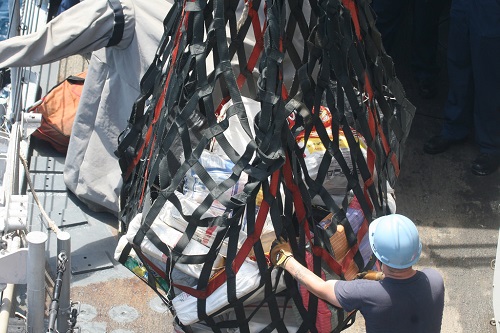USN photo
By
Ricardo Swire
For over a decade the American government has provided more than US$400 million to Caribbean islands for programs that address regional security threats. Such money aided the fight against illicit trafficking and organized crime. It also strengthened national rule of law, while establishing crime and violence prevention programs that target at-risk youth and their immediate communities.
Additional projects supported regional cooperation in maritime and aerial surveillance, law enforcement as well as border and port security. The US Coast Guard’s (USCG) Caribbean Corridor Strike Force (CCSF) Operation Unified Resolve initiative supported by US Drug Enforcement Administration (DEA), Customs & Border Protection (CBP), Immigration & Customs Enforcement (ICE) and Homeland Security Investigations (HSI) significantly assisted CARICOM maritime enforcement agencies’ interdiction successes.
International partnerships, such as the 1982 Operation Bahamas America Turks & Caicos (OPBAT) and 1986 “Ship Rider,” expanded enforcement agencies’ authority. In August 2016 two maritime inter-agency interdiction missions seized US$34 million worth of marijuana and cocaine on the Caribbean Sea and Atlantic Ocean. USCG Fast Response Cutters deployed from the San Juan, Puerto Rico Sector intercepted drug boats crewed by three Jamaicans, one Antiguan and three Dominican Republic nationals. The traffickers transported two thousand three hundred and sixty-seven pounds of cocaine, plus two thousand and seventy four pounds of marijuana.
Puerto Rico and the Bahamas archipelago are backdoors used by transnational drug trafficking syndicates to enter deeper inside CARICOM for warehouse establishment. 2015 Royal Bahamas Police Force Drug Enforcement Unit data catalogued one thousand five hundred and forty-three point five seven pounds of cocaine, fifteen thousand nine hundred and ninety point five nine pounds of marijuana and sixteen thousand and fifty-six marijuana plants seized that year.
Nassau’s national security challenge and the illegal drug trade have an intrinsic connection. Today a single trafficking scheme can manifest as guns, drugs smuggling and human trafficking combined. The Bahamian government’s US$232 million Sandy Bottom Project was an attempt to secure the archipelago’s borders. A national investment reinforced by the US$20 million Citizen Security & Justice Program. The Bahamas National Anti-Drug Strategy 2012-2016 addressed the characterization of the drugs trade as one of three main factors at the core of challenging crime issues.
Ricardo Swire
Ricardo Swire is the Principal Consultant at R-L-H Security Consultants & Business Support Services and writes on a number of important issues.



No Comments Yet!
You can be first to comment this post!